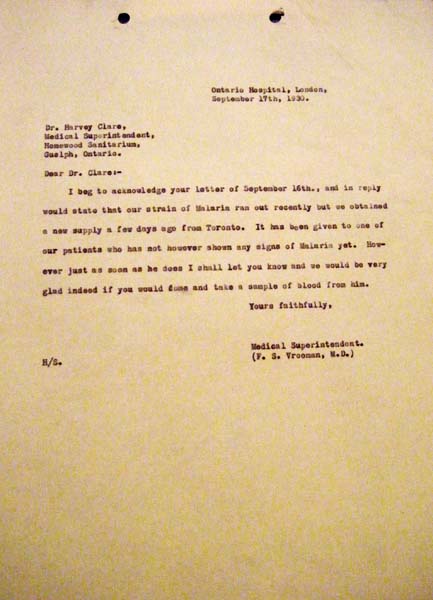A Treatment for Neurosyphilis

This
letter from 1930 describes a patient who was given a strain of malaria but had
not shown any symptoms infection. To treat neurosyphilis, doctors induced
fevers using malaria infected blood and the patient was carefully monitored for
signs of malarial infection. RMHCL
Neurosyphilis
is an advanced stage of syphilis, which attacks the nervous system causing
paralysis and psychosis. Many historians believe that it was one of the factors
in the rising number of patients in asylums at the turn of the century. At the
time, it was most often diagnosed as General Paralysis of the Insane or
Paresis. In 1917, Julius Wagner-Jaureeg
discovered that neurosyphilis could be cured by inducing a malarial fever in
his patients, which could then be treated with quinine.
This discovery led to the testing of patients for syphilis at the former London
Asylum that same year using the Wassermann
test. In 1921, of 1131 patients tested, slightly over 10% were discovered
to have syphilis. Without Wagner-Jaureegs discovery, those that tested positive
could have faced the debilitating paralysis of the later stages of
neurosyphilis, and eventually, many of them would have died. The malarial
treatment of neurosyphilis was widespread by the 1930s, and continued to be
used until the introduction of penicillin
in the 1940s.